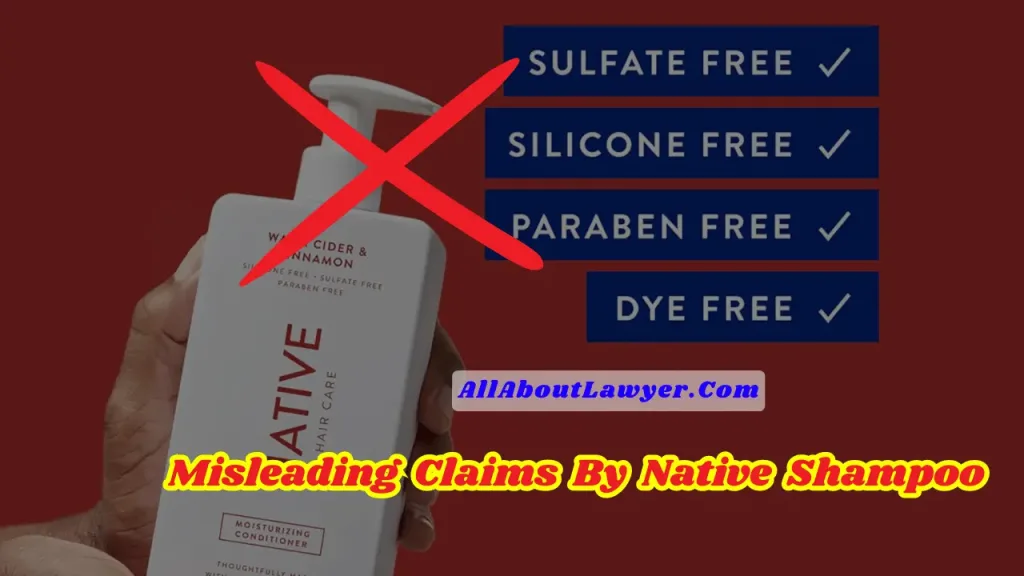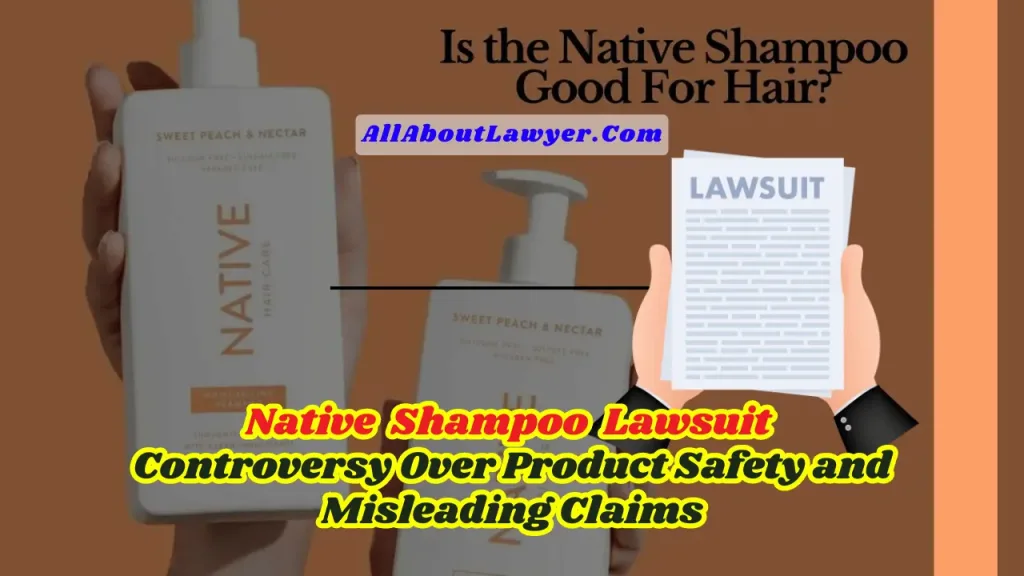Native Shampoo Lawsuit Controversy Over Product Safety and Misleading Claims
The beauty industry is no stranger to controversy, but the Native Shampoo Lawsuit has grabbed headlines for its allegations surrounding the brand’s supposedly “natural” products. Native, a popular personal care brand known for its deodorants, shampoos, and body washes, markets itself as being transparent about its ingredients and committed to using only clean, safe components. However, this lawsuit reveals deeper concerns about the company’s marketing claims and ingredient transparency.
At the heart of this legal battle lies the question: Is Native truly as natural as it claims to be? The lawsuit alleges that despite Native’s marketing promises, some of its products, particularly its shampoos, contain harmful synthetic ingredients and even toxic chemicals. These allegations have raised significant concerns about product safety, misleading advertising, and the broader beauty industry’s accountability.
Table of Contents
The Root of the Controversy: Understanding the Native Shampoo Lawsuit
At the core of the Native Shampoo Lawsuit is a class-action suit that questions the authenticity of Native’s claims regarding its “clean” and “natural” personal care products. The plaintiffs argue that Native’s hair care line, especially its shampoos, may not be as natural or free from synthetic ingredients as advertised, raising concerns over potential false advertising and misleading marketing practices.
The key allegations in the Native Shampoo Lawsuit include:
- Misrepresentation of Ingredients: Plaintiffs claim that Native shampoos contain synthetic and chemically processed ingredients, despite being promoted as “natural” and free from harmful chemicals.
- Deceptive Marketing Practices: The lawsuit points to misleading labels and advertising that may lead consumers to believe the products are more natural than they truly are.
- Failure to Disclose: It is alleged that Native failed to adequately disclose certain ingredients that do not align with consumers’ expectations of a natural product.
- Price Premium: The plaintiffs argue that Native charged a premium for its shampoos based on their purported natural status, which might not be justified if the accusations are proven true.
These allegations have eroded consumer trust and called into question the beauty industry’s marketing practices, especially in the growing “clean beauty” sector.

Ingredients Under Scrutiny in the Native Shampoo Lawsuit
The Native Shampoo Lawsuit brings several ingredients into focus, questioning whether they truly belong in products marketed as natural. Some of the controversial ingredients highlighted in the lawsuit include:
- Sodium Lauryl Sulfate (SLS): A common foaming agent that some consider harsh and potentially synthetic. While effective in creating lather, SLS is often criticized for its drying effects on hair and scalp.
- Phenoxyethanol: This is a preservative used in many cosmetics. While it is plant-derived, it undergoes significant chemical processing, raising concerns about its safety in so-called “natural” products.
- Behentrimonium Methosulfate: A conditioning agent that, despite being derived from natural sources, is chemically modified, blurring the lines between natural and synthetic.
This lawsuit also underscores the broader natural vs. synthetic debate in the beauty industry. Just because an ingredient is natural doesn’t mean it’s safe, and some synthetic ingredients might actually be gentler on the hair and scalp. The complexity of cosmetic chemistry often means that even “natural” ingredients undergo processing, complicating the question of what truly constitutes a natural product.
Impact on Consumers and the Beauty Industry
The Native Shampoo Lawsuit has far-reaching consequences, not just for the brand but for the entire beauty industry:
- Consumer Trust and Skepticism:
- Eroded Confidence: Loyal customers who trusted Native’s branding as a natural alternative now feel betrayed. This has led to growing skepticism around “clean beauty” and “natural” claims.
- Label Literacy: The case has encouraged consumers to become more diligent in reading and understanding product ingredients rather than relying on marketing labels.
- Industry Standards and Regulations:
- Calls for Stricter Oversight: The lawsuit has sparked discussions about the need for clearer and stricter regulations regarding the use of terms like “natural” and “clean” in marketing.
- Self-Regulation: Some beauty companies are reevaluating their marketing strategies to avoid similar legal challenges in the future.
Related article for you:
Dumpster Diving Identity Theft Statistics,
Latest Update on the Native Shampoo Lawsuit
As of the most recent updates, the Native Shampoo Lawsuit continues to progress through the legal system. There have been no major settlements or rulings yet, but the case is drawing attention from consumer advocacy groups and regulatory bodies. The Federal Trade Commission (FTC) and other consumer protection agencies are closely monitoring the case due to its implications for false advertising and misleading marketing practices in the beauty industry.
Additionally, recent court filings have expanded the scope of the lawsuit to include allegations of environmental safety concerns, particularly related to the presence of PFAS (per- and polyfluoroalkyl substances) in some Native products. Known as “forever chemicals,” PFAS are synthetic substances that resist breaking down and have been linked to serious health risks such as cancer, hormonal disruptions, and liver damage.
This development could significantly impact Native’s legal standing, as PFAS contamination is a serious issue that could lead to substantial fines, product recalls, and mandatory changes to the company’s marketing and ingredient sourcing practices. Consumers are advised to keep an eye on this case as it unfolds, as it may set a new standard for transparency and accountability in the personal care industry.
Health Concerns: PFAS and the Clean Beauty Movement
In addition to the ingredients mentioned, recent investigations into Native products have also raised concerns about the presence of toxic PFAS (Per- and polyfluoroalkyl substances), commonly known as “forever chemicals.” These synthetic substances are notorious for their ability to resist breaking down in the environment and accumulate in the human body. PFAS have been linked to serious health risks, including:
- Increased cholesterol levels
- Kidney and testicular cancer
- Changes in liver enzymes
- Reproductive issues
Despite Native’s claims of using “naturally derived ingredients,” the potential presence of PFAS in its products, including its shampoos, body washes, and deodorants, has sparked further scrutiny. The lawsuit may push the company to reevaluate its ingredient sourcing and transparency.

Legal Landscape: Navigating the Native Shampoo Lawsuit
The Native Shampoo Lawsuit isn’t an isolated case. Other beauty brands like Honest Company and Aveeno have faced similar lawsuits over misleading marketing practices. The Federal Trade Commission (FTC) has increasingly been monitoring claims around “natural” and “clean” products across various industries. If the plaintiffs succeed, the lawsuit could have significant repercussions:
- Financial Compensation: Consumers affected by the misleading marketing claims may receive monetary compensation through settlements or refunds.
- Changes to Marketing: Native may be forced to alter its product labels and advertising to more accurately reflect the ingredients used in its products.
- Industry-Wide Changes: The lawsuit could set a precedent that influences how other beauty companies advertise their products, potentially leading to industry-wide reforms in labeling practices.
Related article: Native Shampoo Lawsuit Update, Regulators Close Investigation With No Action Taken
What Consumers Can Learn from the Native Shampoo Lawsuit
The Native Shampoo Lawsuit provides valuable lessons for consumers who are increasingly concerned about what they put on their skin and hair:
- Ingredient List Literacy: Always read the ingredient list carefully, and research any unfamiliar components. The term “natural” is not regulated, so it’s essential to look beyond the marketing.
- Third-Party Certifications: Look for third-party certifications like USDA Organic or Ecocert, which can offer more transparency and ensure products meet certain standards.
- Empowering Hair Care Choices: Some consumers have turned to DIY alternatives and sustainable haircare products to ensure full control over the ingredients they use. This trend may grow as the lawsuit unfolds.
The Future of Natural Hair Care Post-Lawsuit
As the Native Shampoo Lawsuit progresses, it’s likely to reshape the landscape of the natural beauty market. Both companies and consumers are likely to take lessons from this case, leading to:
- Industry Adaptations:
- Transparency Initiatives: Expect companies to invest more in transparent communication about their ingredient sourcing and manufacturing processes.
- Innovation in Formulation: The push for truly natural products may lead to innovation in plant-based cosmetic chemistry.
- Consumer Behavior Shifts:
- Informed Purchases: The controversy may result in a more discerning customer base that demands clear evidence of natural claims.
- Personalized Haircare: There may be a shift towards personalized, custom-formulated products designed to cater to individual haircare needs and concerns.
Conclusion: Lessons from the Native Shampoo Lawsuit
The Native Shampoo Lawsuit serves as a wake-up call for both consumers and the beauty industry. It underscores the need for:
- Greater Transparency: Honest and clear communication about product ingredients and their origins.
- Regulatory Clarity: More defined standards for what constitutes “natural” in personal care products.
- Consumer Education: Improved resources to help consumers make informed decisions about their haircare choices.
- Industry Accountability: A renewed commitment to ethical marketing practices in the beauty sector.
The Native Shampoo Lawsuit may very well be the catalyst needed to clear up the ambiguities in natural beauty claims, leaving the industry and consumers better informed and protected.
Read also: Mary Ruth Organics Lawsuit
Read also: Sierra Mist Lawsuit | Untold Legal Story Behind PepsiCo’s Rebranding
FAQs
What is the Native Shampoo Lawsuit about?
The Native Shampoo Lawsuit alleges that the company falsely marketed its shampoos as “natural” while containing synthetic and potentially harmful ingredients.
What ingredients in Native Shampoo are under scrutiny?
The lawsuit questions ingredients such as Sodium Lauryl Sulfate, Phenoxyethanol, and Behentrimonium Methosulfate for their synthetic or chemically modified properties.
What are PFAS, and why are they important in this case?
PFAS are synthetic chemicals that are slow to break down and can accumulate in the human body. They have been linked to various health risks, including cancer, and may be present in some Native products.
How can I join the Native Shampoo Lawsuit?
If you purchased Native shampoo, you may be eligible to join the class-action lawsuit. Contact the law firm handling the case for more information.
Is Native Shampoo safe to use?
While the lawsuit raises concerns about marketing claims, there have been no official safety recalls. However, consumers should stay informed as the case develops.
About the Author

Sarah Klein, JD, is a former consumer rights attorney who spent years helping clients with issues like unfair billing, product disputes, and debt collection practices. At All About Lawyer, she simplifies consumer protection laws so readers can defend their rights and resolve problems with confidence.
Read more about Sarah
About the Author

Sarah Klein, JD, is a licensed attorney and legal content strategist with over 12 years of experience across civil, criminal, family, and regulatory law. At All About Lawyer, she covers a wide range of legal topics — from high-profile lawsuits and courtroom stories to state traffic laws and everyday legal questions — all with a focus on accuracy, clarity, and public understanding.
Her writing blends real legal insight with plain-English explanations, helping readers stay informed and legally aware.
Read more about Sarah
